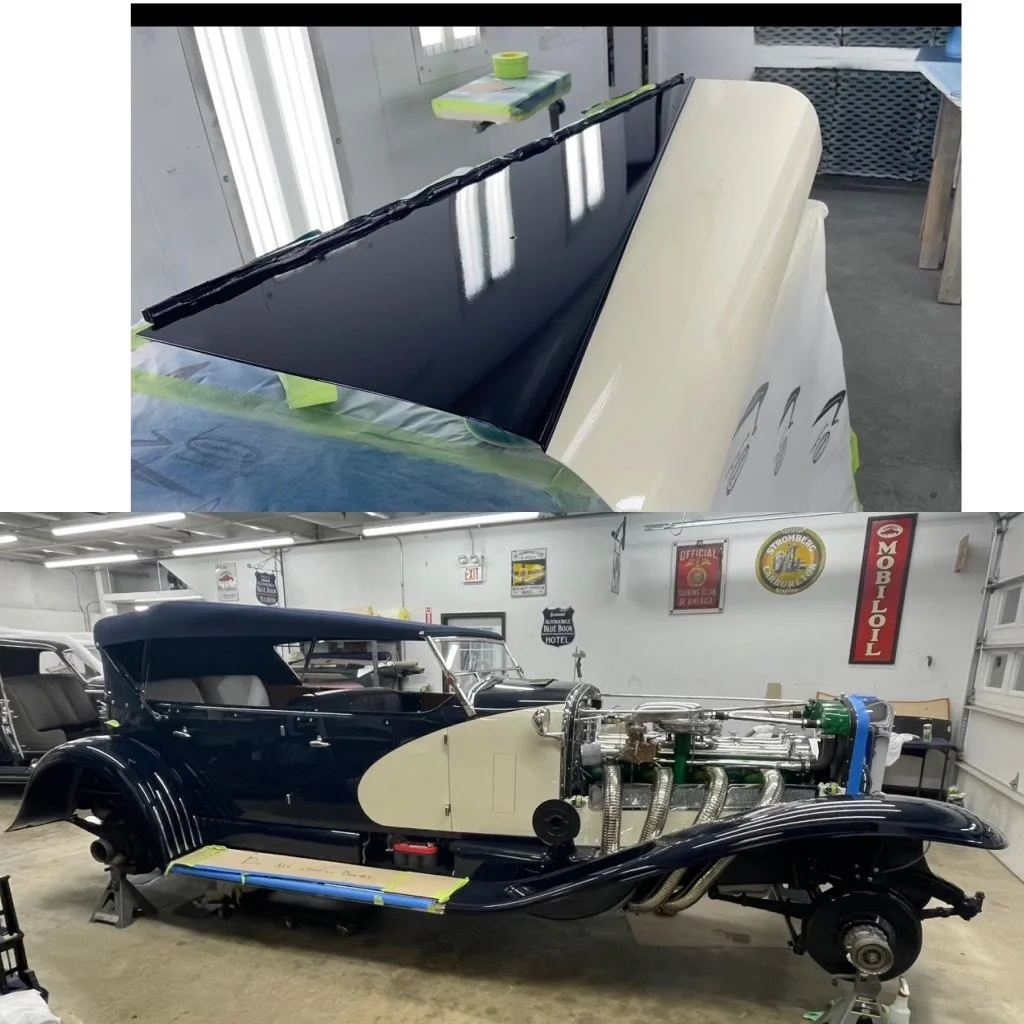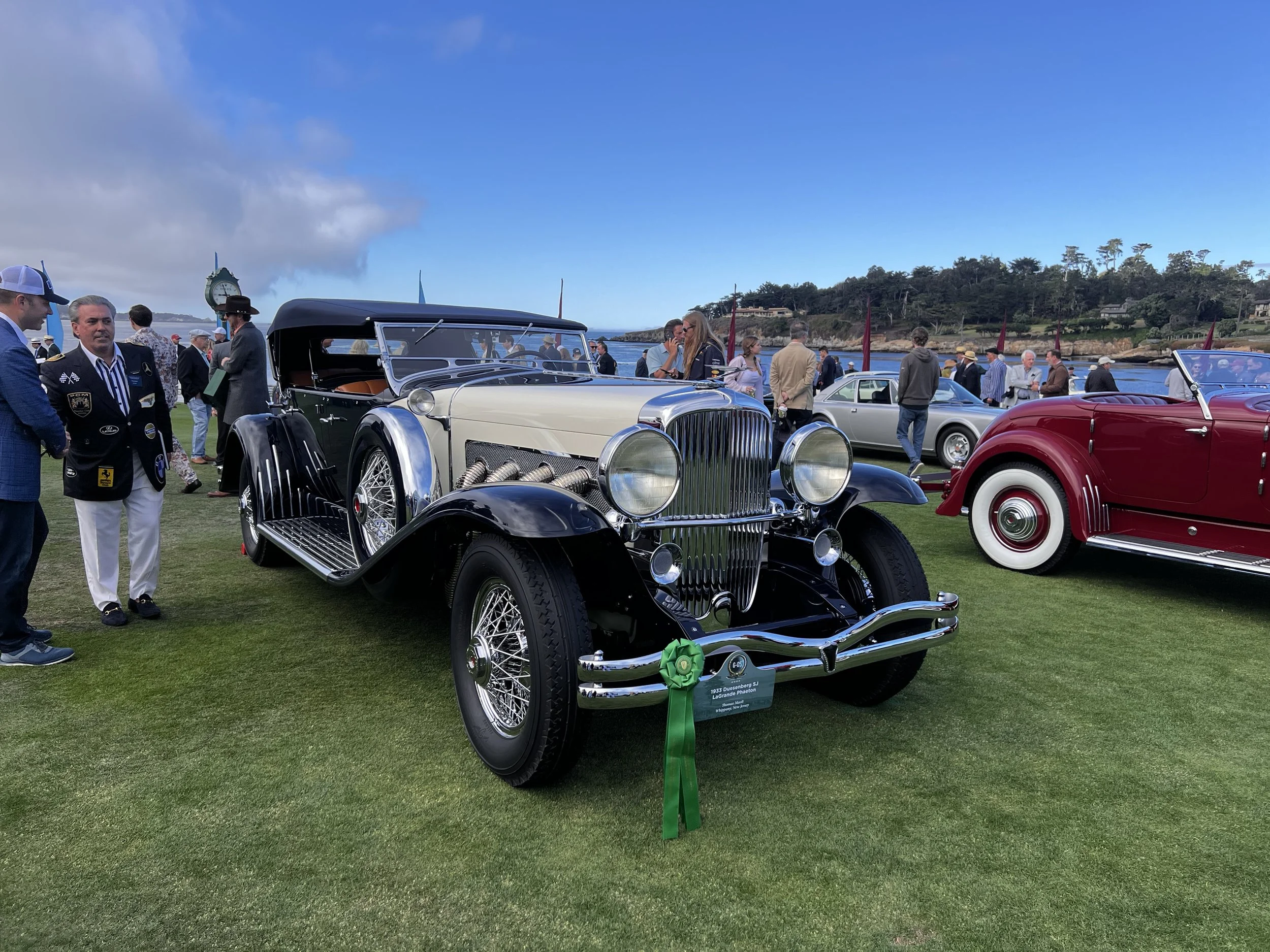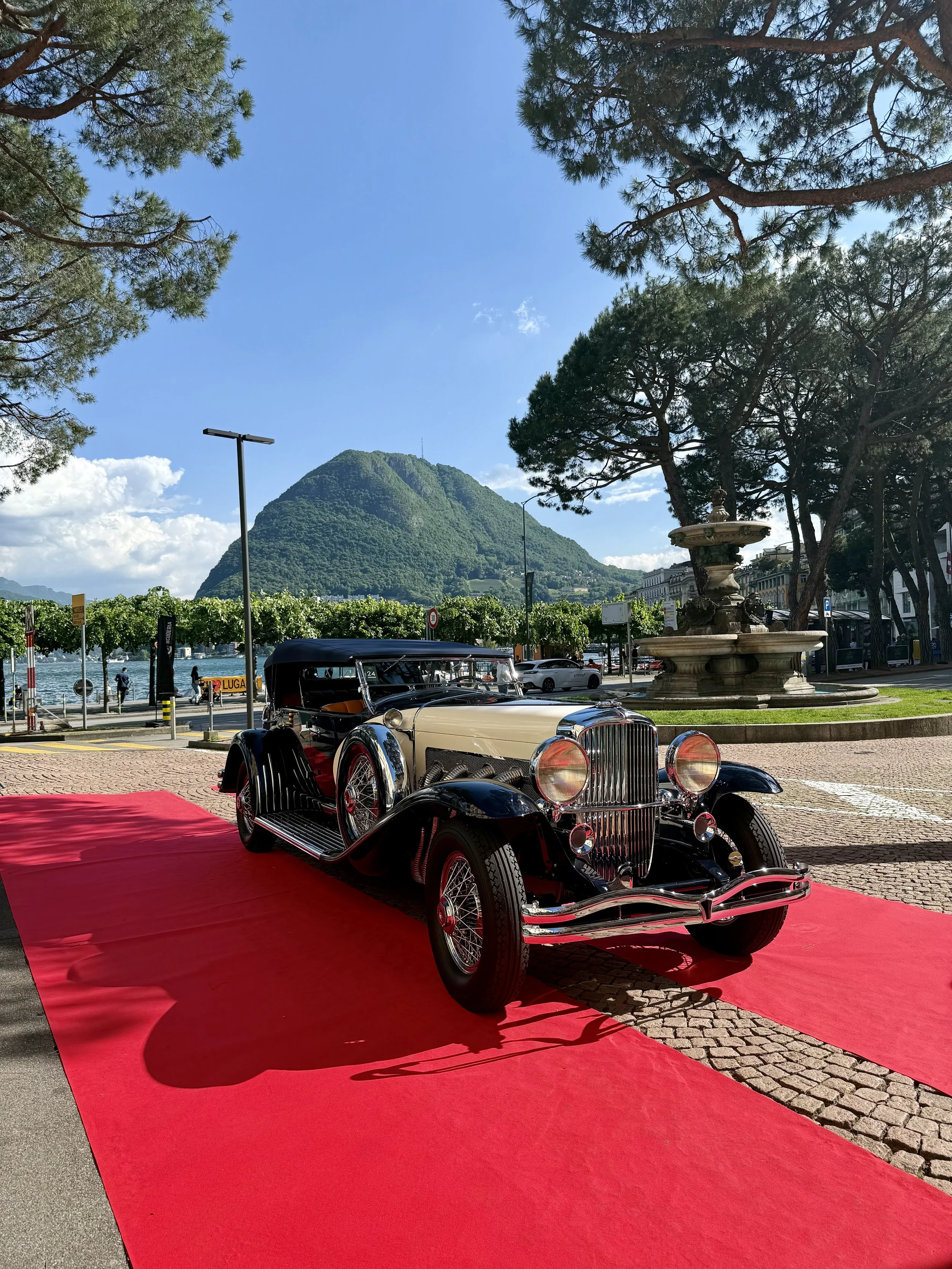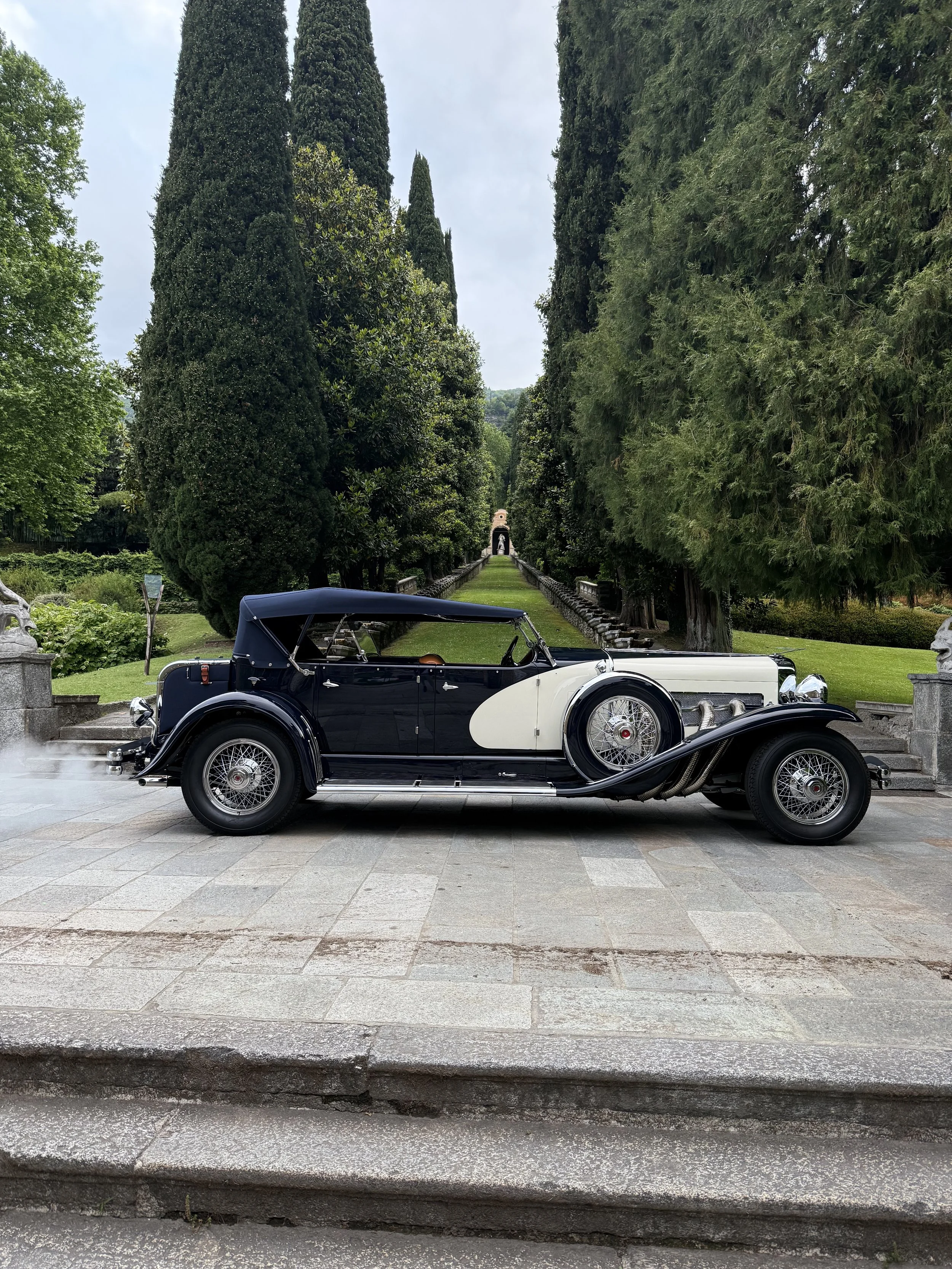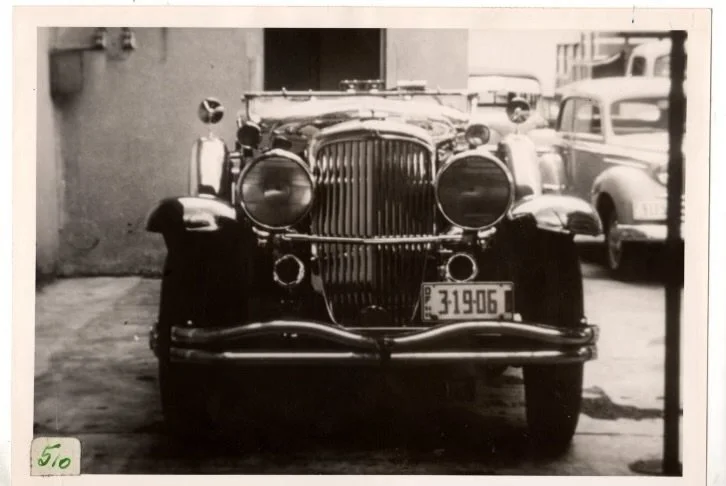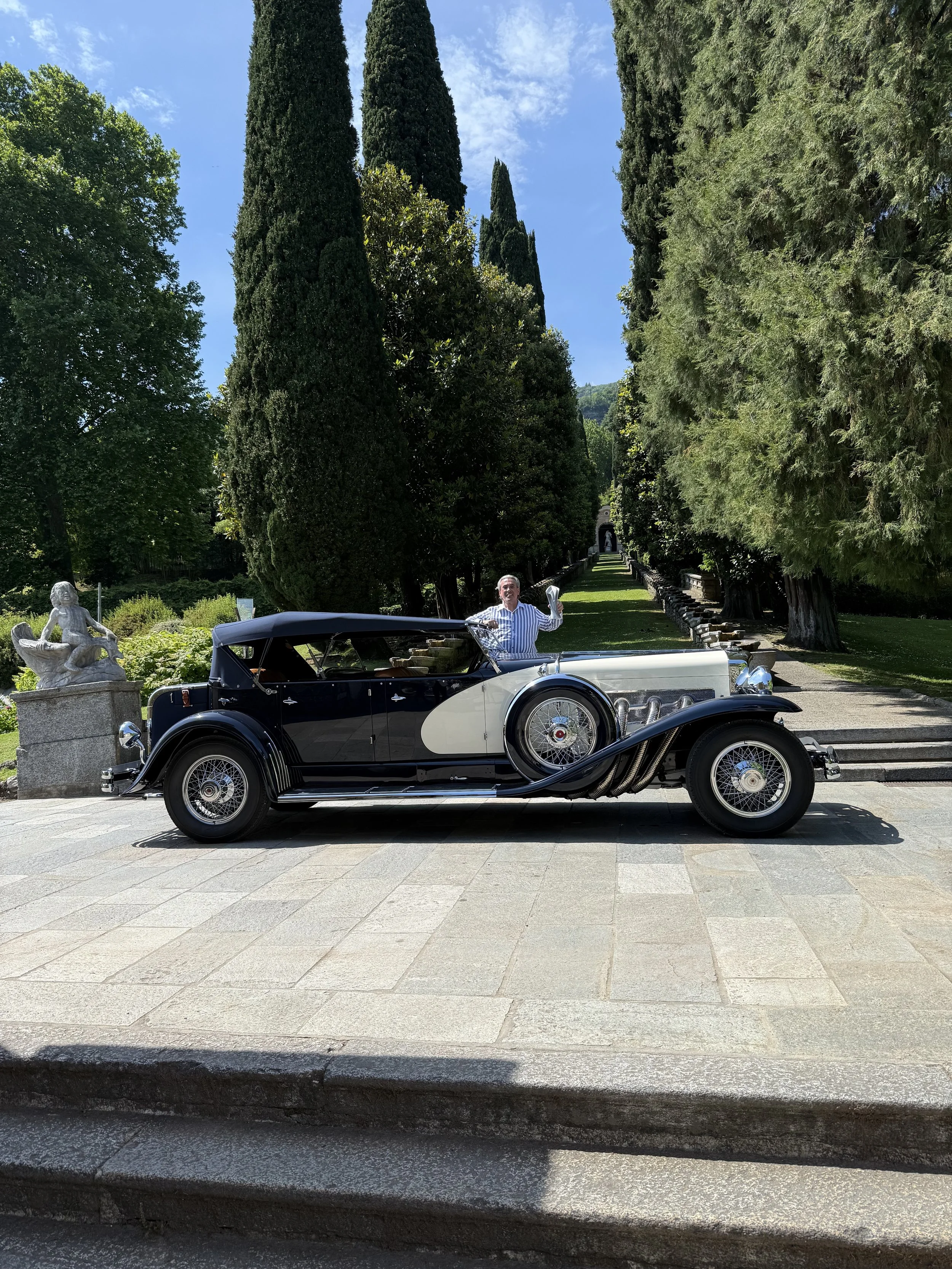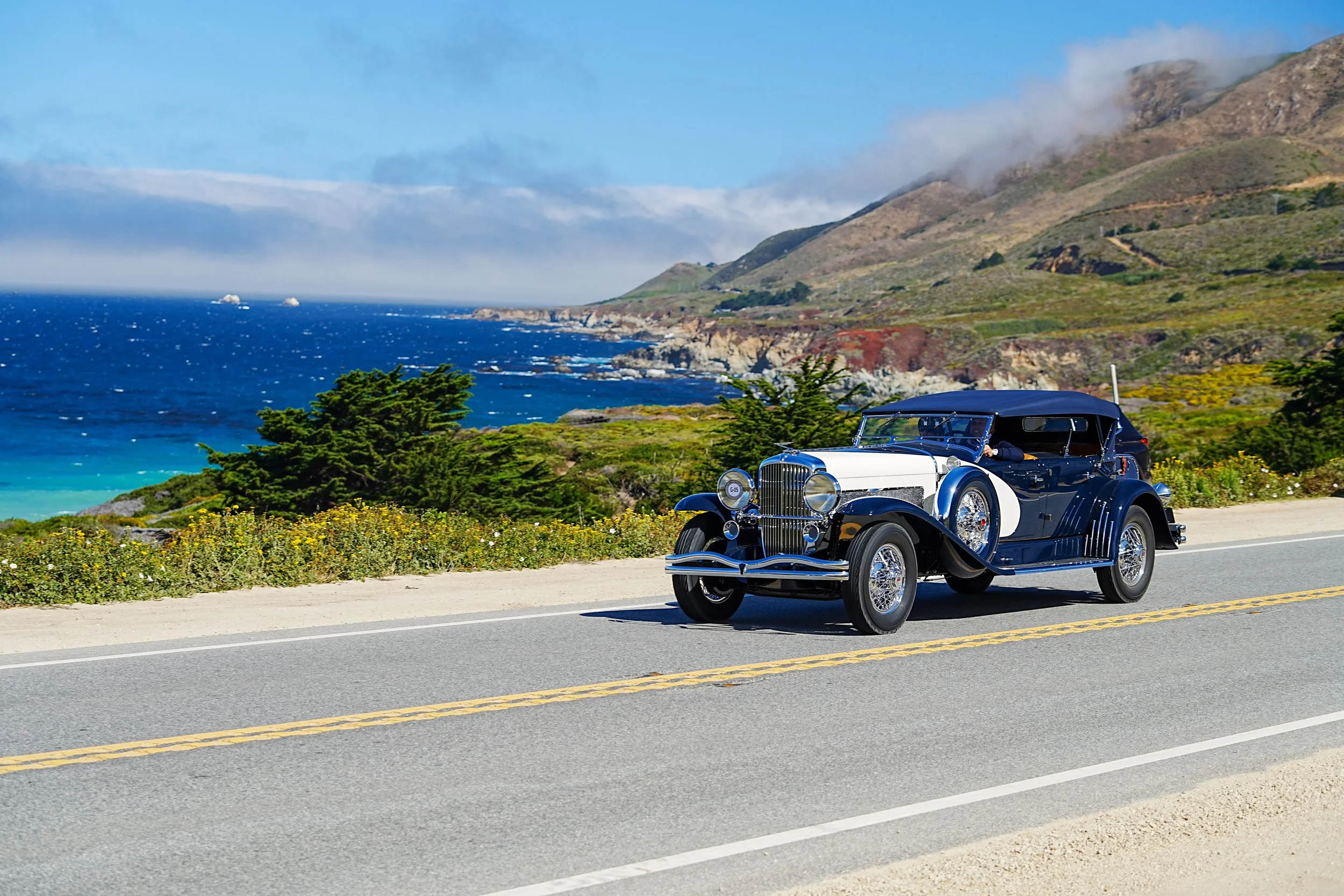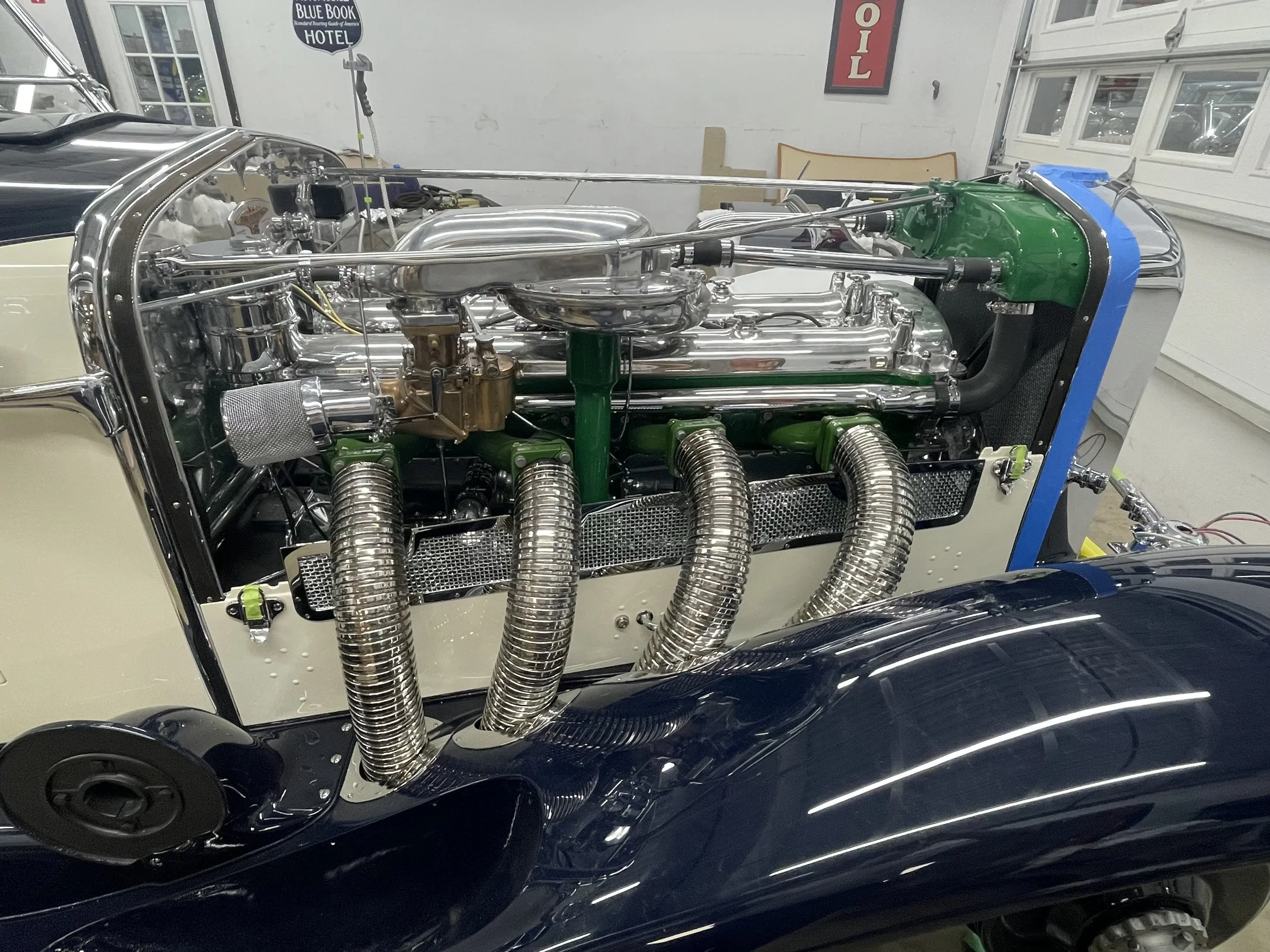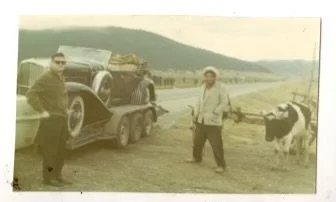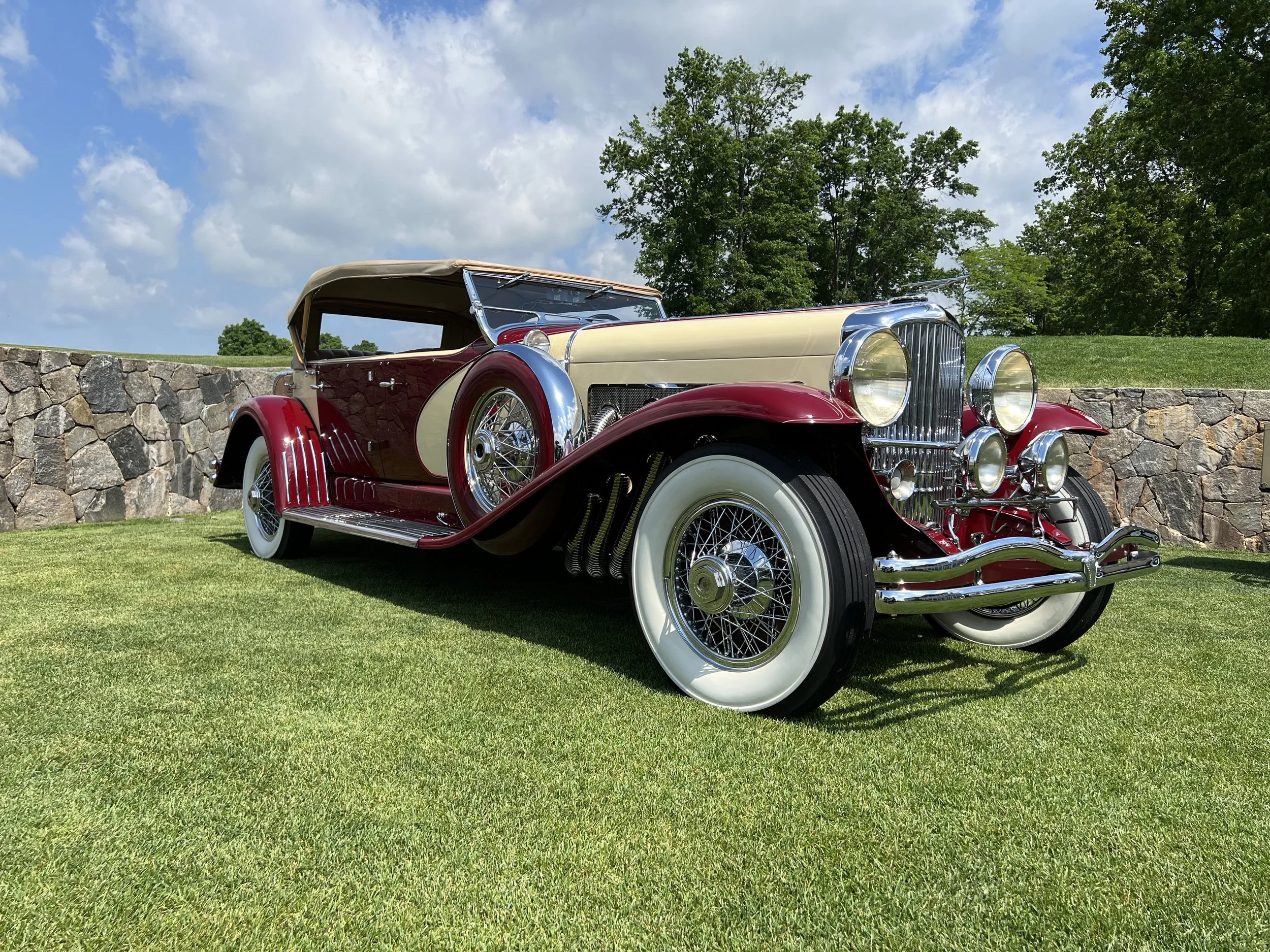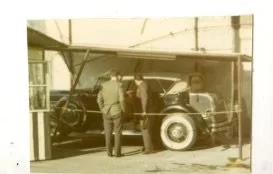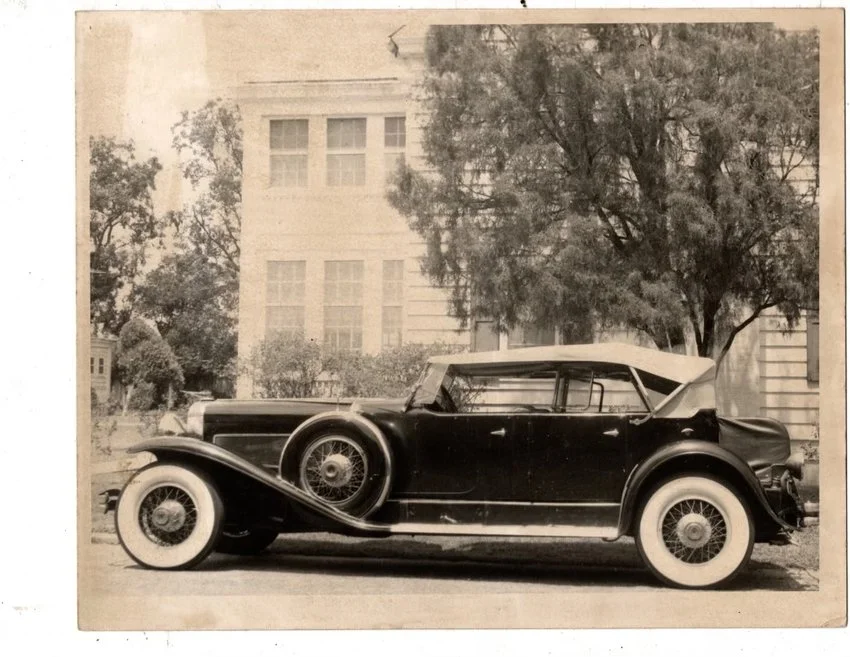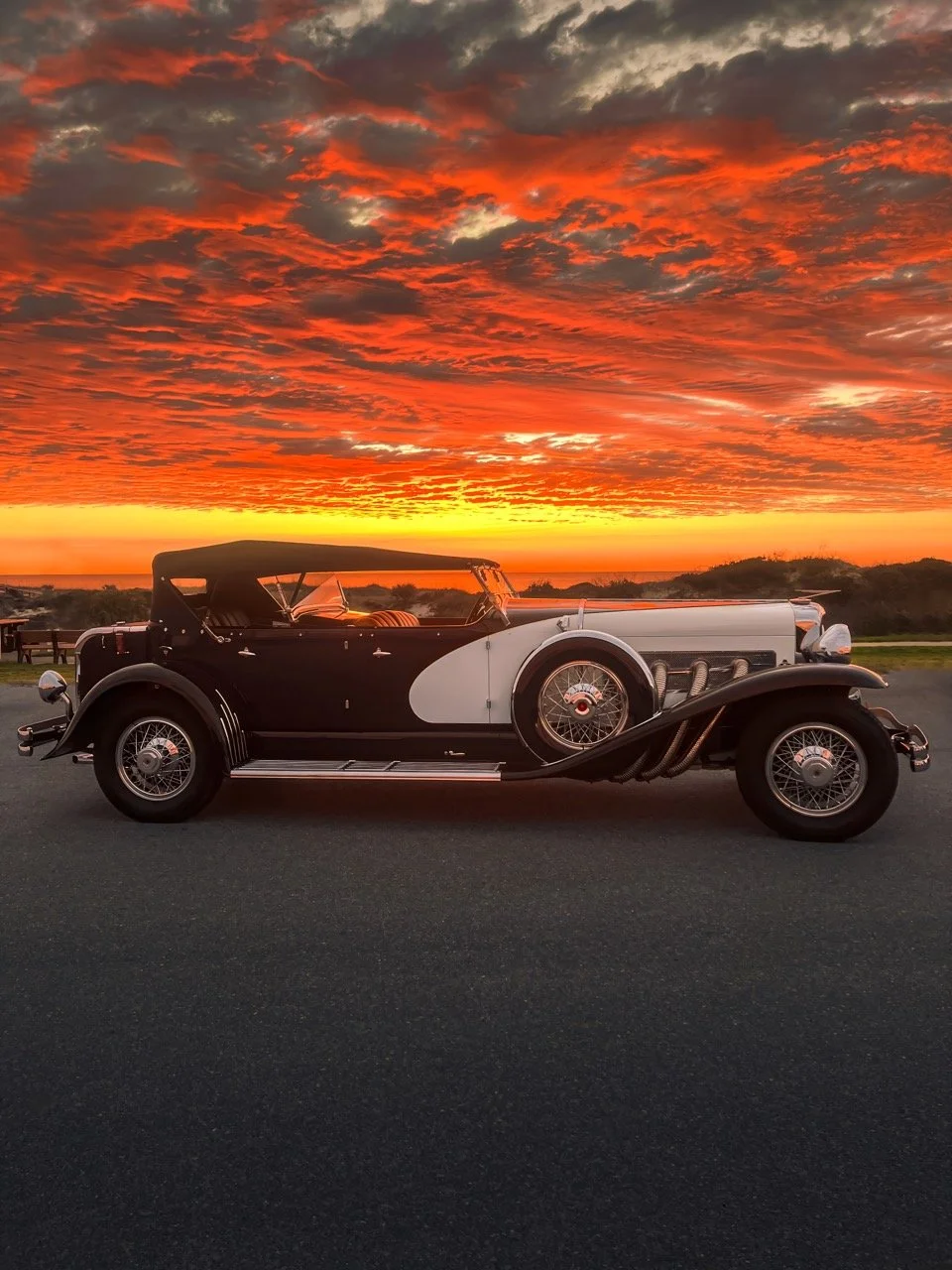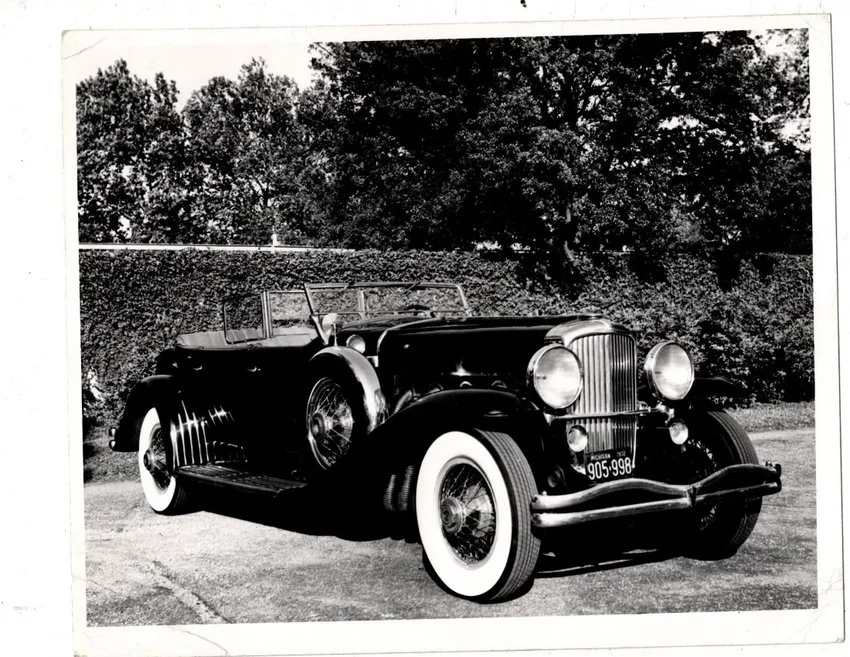1933 Duesenberg SJ 'Sweep Panel' Dual-Cowl Phaeton by LaGrande
“The Mexico City SJ”
Engine #: J-510
Chassis #: 2540
The 1933 Duesenberg SJ 'Sweep Panel' Dual-Cowl Phaeton by LaGrande famously known as “The Mexico City SJ” stands as one of the most historically significant and visually arresting examples of classic American automotive craftsmanship. This car is one of only three original SJ dual-cowl phaetons ever built by LaGrande, and notably, this example is the second produced. Even more impressively, it retains its original supercharged engine, bodywork, and chassis, making it a rare survivor from an era of opulence and innovation.
Originally commissioned by legendary Wall Street short seller Ben E. Smith nicknamed “Sell ‘Em Smith” the car’s early life was as bold as its first owner. Smith made a name and fortune for himself by betting against the crashing American economy during the Great Depression, reportedly earning over $10 million in 1930 alone. A staunch bear in a time of panic, his choice in automobiles reflected both his wealth and his unconventional flair.
By the late 1930s or early 1940s, the Duesenberg’s factory-installed supercharger was removed by the company’s New York branch a common modification at the time due to concerns about long-term reliability. In the early 1940s, Ben E. Smith and his son drove the car from the U.S. down to Mexico City, using it as their personal transportation while pursuing a new business venture: developing a horse racing track, the Hipódromo de las Américas. Smith had partnered with businessman Bruno Paglia on the project, but when Smith later decided to exit the venture, the Duesenberg was included as part of his buyout and Paglia took ownership of the car.
From there, the car passed to Mexico City used car dealer Valentin G. Melgarejo, who cleverly used the striking SJ as a rolling advertisement for his dealership. The car drew attention wherever it went, becoming a fixture in the local automotive scene. It was during this period that it earned its enduring nickname: “The Mexico City SJ.” For many years, Melgarejo refused to part with the car, recognizing the unique draw it had as a promotional piece. But after continued interest and the right offer he eventually agreed to sell.
The vehicle made its way back to the United States, purchased by Dr. William Wetta of Alabama, and then passed to collector James Southard, who undertook a restoration in the mid-1970s. Southard chose a maroon and cream two-tone finish a livery that became iconic in its own right.
In 1979, the car changed hands once again, landing in the collection of Gene Storms of Newport Beach. Storms had a factory supercharger installed to return the car to its original SJ specification, reviving the spirit of the car as it had first left the Duesenberg factory.
Finally, in 1983, this legendary machine was acquired by renowned collector General William Lyon. Under his stewardship, the SJ remained part of one of America’s most prominent classic car collections for over 25 years, admired by enthusiasts and historians alike.
Today, the “Mexico City SJ” resides in the collection of prominent businessman and automotive enthusiast Tom Maoli. Maoli acquired the car in 2021 and, after enjoying it in its existing condition, entrusted it to renowned restorer Steve Babinsky in Lebanon, New Jersey. Over the course of two years, the car underwent a comprehensive, body-off restoration with every component either meticulously restored or faithfully recreated to original specification.
The result was nothing short of world-class. Since its completion, the SJ has earned top honors across the globe, including Best in Class awards at the Pebble Beach Concours d’Elegance, Amelia Island Concours, Audrain Newport Concours, and the prestigious Villa d’Este Concours in Italy cementing its place as one of the finest surviving Duesenbergs in existence.
History and Significance
Design Differences
Dual Cowl
Dual cowl refers to the second windshield in the rear
Sweep Panel
Sweep panel describes the styling design where the line that starts behind the Duesenberg hood ornament, goes down the top of the hood - sweeping down towards the door and making its way back to the side of the hood. This gave the hood and side of the car a more sophisticated design by recessing the panel slightly lower than the rest of the surface to give a C-shaped profile
Vehicles that sported the “sweep panel” design typically opted to use the line for a two-tone paint scheme
This was repainted to a navy blue and an off white
The iconic “Sweep Panel” Dual-Cowl Phaeton, originally produced by LeBaron, was reworked by the talented Duesenberg designer Gordon Buehrig, who raised the beltline to meet a reverse-curved cowl and gave the “sweep panel” itself a more subtle but no less attractive curve
The vehicle sits on Duesenberg’s LWB chassis
153.5 inches wheel to wheel
Sports side exhaust pipes
Mesh side of hood
All supercharged Duesenbergs have side pipes - not all side piped Duesenbergs are supercharged
Pilot ray driving lights
Multi piece windshield
Cowl lights
Rear Trunk
Blue convertible top
Body color painted running boards
Exterior
Peanut butter tan interior
Light tan/white carpets
Interior
Supercharged 420 cubic inch inline 8 with dual overhead cams
320 Horsepower
Top speed of 135+ mph
A shaft-driven centrifugal supercharger turning at seven times engine speed—up to 31,500 rpm
The supercharger is ineffective below 2500 rpm
Engine/Performance
Known Owners
Ben E. Smith
Bruno Pagliai
Valentin Melgarejo
Dr. William Wetta
James Southard
Gene Storms
General Williams Lyon
Tom Maoli
Gallery
